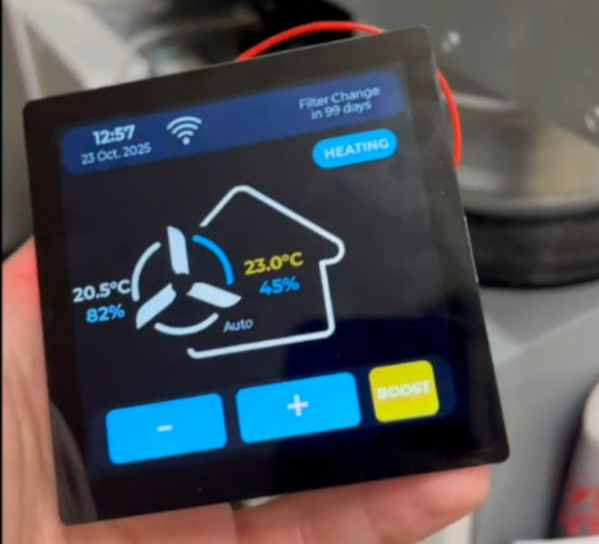In our modern semi-dystopia, it seems like most companies add automation features to their products to lock them down and get consumers to buy even more proprietary, locked-down components. The few things that are still user-upgradable are getting fewer and farther between, but there are still a few things that can be modified and improved to our own liking like this control panel for a heat recovery ventilator (HRV).
HRVs are systems that exchange fresh, outside air with stale, inside air while passing them both through a heat exchanger to keep from wasting energy. Many systems run continuously but they aren’t always needed, so some automation is beneficial. This upgrade from [vincentmakes] improves the default display for a Zehnder Comfoair Q350 HRV with a color display as well as adding it in to a home automation system, letting a user control fan speeds remotely as well as alerting the user when it’s time for filter replacements and providing up-to-date information from all the sensors in the HRV.
The project builds on a previous project which adapted an ESP32 to interact with the CAN bus used on these devices. With these upgrades the user can forgo the $300 proprietary upgrade that would be needed to get the same functionality otherwise. It’s also fully open-source so all that’s needed is to flash the firmware, replace the display, and enjoy the fresh air. There’s other modern HVAC equipment that can benefit from new controllers and a bit of automation as well.












